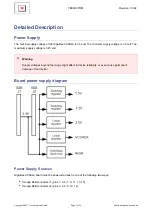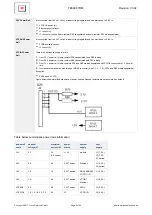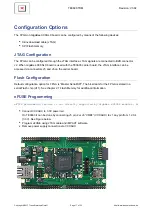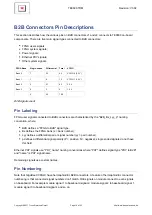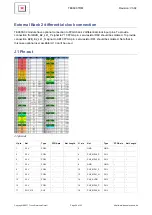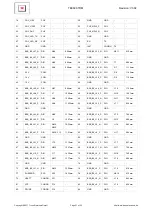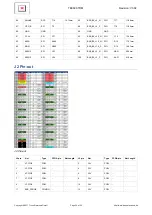
TE0600 TRM
Revision: V3.02
Copyright © 2017 Trenz Electronic GmbH
Page
of
14
33
http://www.trenz-electronic.de
1.
2.
3.
4.
5.
Caution
For correct operation of the Marvell PHY it is required that PHY Reset pin sees valid low level
each time power is applied and also during any brownout situations where system Power is
removed for short time, but some pins are not at valid logic levels.
Solutions:
if GbE PHY is not used PHY reset pin can be tied off to GND
if PLL is used from PHY clock, then PLL "locked" output can be used to reset PHY - as long
PLL is not locked, it will keep PHY in reset
Reset pulse generation circuit clocked from FPGA internal configuration clock, this circuit
can force PHY reset pin to low when external clock from PHY is not available
any custom Reset circuit that is guaranteed to drive PHY reset to low level at least once
after FPGA configuration when PHY clock is not running.
any user logic that is guaranteed to drive PHY reset low after FPGA configuration (without
using PHY clock).
Explanation: Marvell PHY samples the MODE pins ONLY when it sees low level on PHY reset
input, it does not sample those pins during short power off situations (if the reset pin holds high
level because of pin capacitance and high impedance of the pins)! So it is possible that the PHY
mode is reset, but the mode pins are not sampled again - this yields in mode setting where
125MHz reference clock from PHY is not available.
Oscillators
The module has one 25 MHz oscillator for Ethernet PHY (U9). Ethernet PHY provides clock multiplication
and resulting 125 MHz clock acts as a system and user clock for the FPGA (FPGA input pin AA12).
Caution
Note: For correct generation start, PHY should receive reset pulse. Recommended way to do it it's
to connect PHY reset signal (ETHERNET_PHY_RST_N) to LOCKED output of corresponding
DCM (DCM which use 125 MHz from PHY).
The module also provides the footprint for custom 3.3 V single-ended oscillator (U12) which can be installed
as an option (FPGA input pin Y13).







